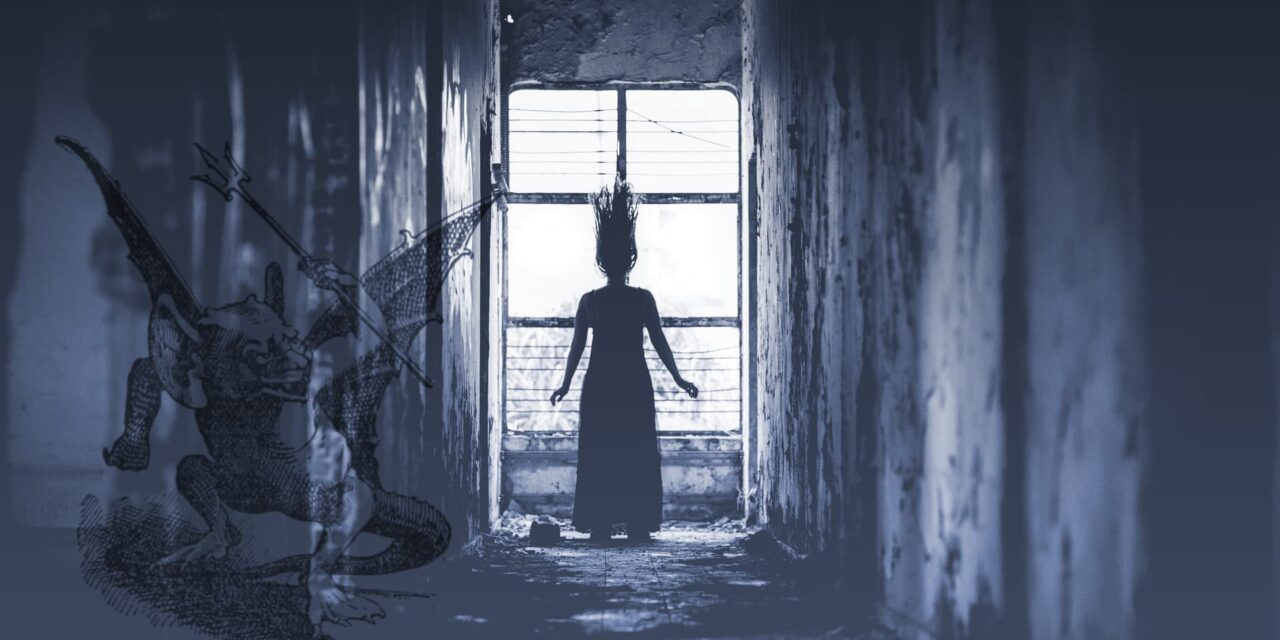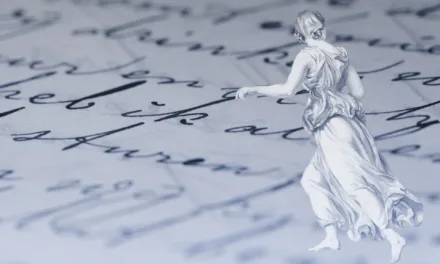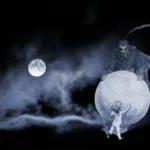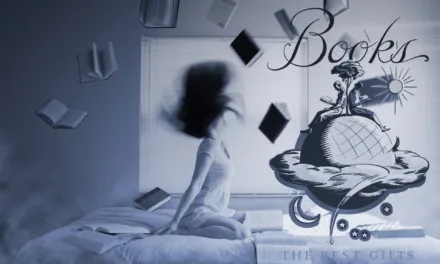
A Plot Structure for Writing Terrifying Horror Fiction

Horror is one of the most enduring genres of fiction. It touches something within us – letting us explore our most primal emotions. There are no hard and fast rules for writing Horror Fiction, but there are certain elements that you’ll find are common. Knowing the main plot beats in advance can help you pinpoint where you can develop and expand in your own style.
We’ll be looking at some of the most popular story structures and breaking down how to use them to their fullest effect. You’ll be able to access the full repository here as we release them, complete with downloadable templates to use in your next Novlr project! This template is inspired by T.L. Bodine‘s Horror Beat Sheet.
“The oldest and strongest emotion of mankind is fear, and the oldest and strongest kind of fear is fear of the unknown.”
H.P. Lovecraft
Act 1: The Setup
Act 1 is all about setting the stage and building your world. You should let your readers get to know your characters and set the tone for what comes next. This should make up the first 25% of your story.

Stage 1: The Hidden Monster
The first stage of any good piece of horror fiction is the hook. You want to draw your readers in with a hint of what is to come by teasing the Monster that will be the central antagonist of your work. This opening section is a promise to your readers – “this is the kind of horror you can expect.”
This initial stage can be the first chapter of your novel or take the form of a prologue. It should include an early glimpse of your Monster, or at least hint at its existence. It should also show the Ordinary World as a mirage, where something sinister creeps just out of view.
Stage 2: Introducing the Characters
If your main characters haven’t been introduced in your hook, then this is the time to introduce them to your readers. You want to set them up as people, reveal their internal motivations, and hint at how your characters’ internal motivations and goals may come into conflict with the motivations of your Monster.
Good horror fiction uses characters’ wants and desires against them, so it’s essential to set them up strongly from the start. Genuinely great horror is driven by characters, not events.
Stage 3: The Journey Begins
Stage 3 introduces the inciting incident that puts your characters in the path of your Monster. This can be through choice or accident. The inciting incident will isolate them somehow, whether physically or emotionally. It’s that isolation that will build a sense of creeping dread.
In some cases, your characters may have the chance to walk away, creating a moment of tension when they choose to carry on the path toward the Monster. Your reader knows what is coming, making your character’s fates feel inevitable, and amplifying the sense of fear.
Stage 4: Meeting the Monster
While your reader will have had hints at the Monster, this is where your character will have their first brush with it. It will be their first realisation that the reality they thought they knew is not their reality at all, and that something lurks in the darkness.
While your characters will have their first brush with the Monster in the final part of Act 1, it provides another excellent opportunity to develop their internal lives. Here, your characters can choose to downplay the threat that the Monster poses. They may even be in denial about its existence and believe they’ve imagined it. It’s the perfect chance to highlight the conflict between a character’s rational mind and the Monster.
Act 2: A Changing Reality
Just like in The Hero’s Journey, Act 2 sees your character crossing a threshold and embarking into a new reality where Monsters exist. From this point forward, you’ll need to increase the tension. This will be the bulk of your novel, making up 50% of the story from the 25% – 75% mark.

Stage 5: The Turning Point
It is here that your character reaches the point of no return, and you’ll need to ramp up the tension and moments of horror in your story.
A lot of the danger your characters face will have been in the background until now. Something they could rationalise away if they so choose. But now, you’ll want the danger to be obvious and unavoidable. You could mark this with the first character death, or a serious scare that forces your characters to confront their belief in the Monster.
Stage 6: Pursuit
Now that you’ve started to ramp up the tension with a confrontation, stage 6 is where the meat of your narrative lies. The Monster will pursue your characters from here on out, forcing them to confront their inner demons.
The internal goals, motivations, and conflicts you outlined in the early stages will play a big part here. They should be teased out and picked apart as your characters are forced to confront them through their responses to the Monster.
The Monster should grow increasingly dangerous. Your characters should not only fear what the Monster represents but also genuinely worry about their ability to survive and overcome. You can include injuries that characters struggle with as they are pursued and may leave them permanently marked by their experiences, or you could include more character deaths. Both your characters’ internal and external struggles should come into play here to build a sense of rising tension that is essential to all horror fiction.
Stage 7: The First Confrontation
While being pursued by the Monster, your characters will have learned and developed. As the Monster catches up to them, your characters should feel confident or desperate enough to attempt a confrontation.
This confrontation will fail. This can be because your characters lack some vital piece of information, have made the wrong links between or misinterpreted essential clues, or are unable to reconcile their inner demons or conflict with the Monster in a way that will ensure success.
Stage 8: Desperation
After the failed confrontation, your characters should feel desperation. The isolation you developed in the early stages of your novels should be reiterated here, as your remaining characters should be more alone (both physically and emotionally) than ever before.
At this point, your readers should feel as hopeless as your characters. The Monster will be stronger than ever, and the situation will feel hopeless. Your protagonist may finally come to understand that their internal conflict is what stopped them from defeating the Monster, which makes them question their ability ever to overcome it. It may even make them feel responsible for the events in some way.
Act 3: The Payoff
Here, we enter the last quarter of your novel. This is where your characters will enter the final confrontation with the Monster. It should make up the final 25% of your novel, ramping up into the climax, before either destroying or returning your remaining characters to their original state of existence, forever changed by the experience.

Stage 9: Breakthrough
Just in time, your remaining characters will stumble upon or learn a vital piece of information that makes clear how to defeat the Monster. They may have actively sought out this information or found it through an epiphany; either way, this breakthrough should be represented by some kind of plot twist or stunning revelation.
With this information at their disposal, your characters are ready to prepare for the final confrontation with the Monster and the climax of your novel.
Stage 10: Preparing for the Final Confrontation
Instead of running, your character will now seek out the Monster, ready to confront it head-on. Up till now, they have been pursued – now they become the pursuers.
Armed with the knowledge gained from the previous stage, your characters feel confident in their victory, unaware of the cost that their victory may require.
Stage 11: The Price of Victory
Here, your characters must face not just the Monster, but also their own internal and external conflicts. Victory against the Monster will require either a great sacrifice on the part of your protagonists, or a self-realisation that your characters are simply not ready to face.
Defeating the Monster must carry a hidden cost that will change your characters forever. Despite returning to their previous existence, nothing will ever be the same. Here, you can choose to have your characters either succeed or fail. If you have more than one surviving character at this point, you can even have one be unable to confront their conflicts and fail, while the other is willing to do what must be done and emerges victorious.
It’s essential to up the stakes here as this is the climax of your novel. You need to provide choice and reel the reader in by ramping up the tension. You need it to both be dramatic and rewarding, with a strong emphasis on your character. If a sacrifice is made for victory, you need to show how their experiences have led them to this point. If your character is unwilling to do what must be done, you need to highlight that weakness and show why they lacked the strength to defeat the Monster.
Stage 12: The Fallout
With the Monster defeated, or the character all dead, this is where you must explore the consequences of what has happened, whether this is a transformation of your remaining characters, an evil released into the world, or resetting a cycle for another group of unsuspecting characters.
Your remaining characters will have been permanently changed by their experiences, so you should illustrate how differently they see the world now. Are they no longer as rational as they once were? Do they fear shadows? It’s important to show the difference between how the world felt to them before and how different it feels after their ordeal.
Even if your characters were victorious, the Monster should not be entirely destroyed. Evil persists, and in horror fiction, victories are never permanent. You should offer a final hint at the Monster’s survival, either through the remaining character’s experiences or as an epilogue hinting at more terrors still to come.
Download the template
You can download the template below to use it for your next project and import it directly into Novlr. If you go to the Projects page from your Novlr dashboard and click on “Import,” the template will automatically split your project into acts and sections for easy plotting!
There is no “right” way to outline a novel. That’s why there are lots of different story structures out there. The trick is finding one that works for you and adapting it to suit your needs. Once you understand the way story structure works, it’s easy to bend the rules to make something completely unique to you.
What a good plot template can do is provide a springboard for your ideas, giving them fertile soil in which your imagination can help them flourish into the novel they deserve to be.





























